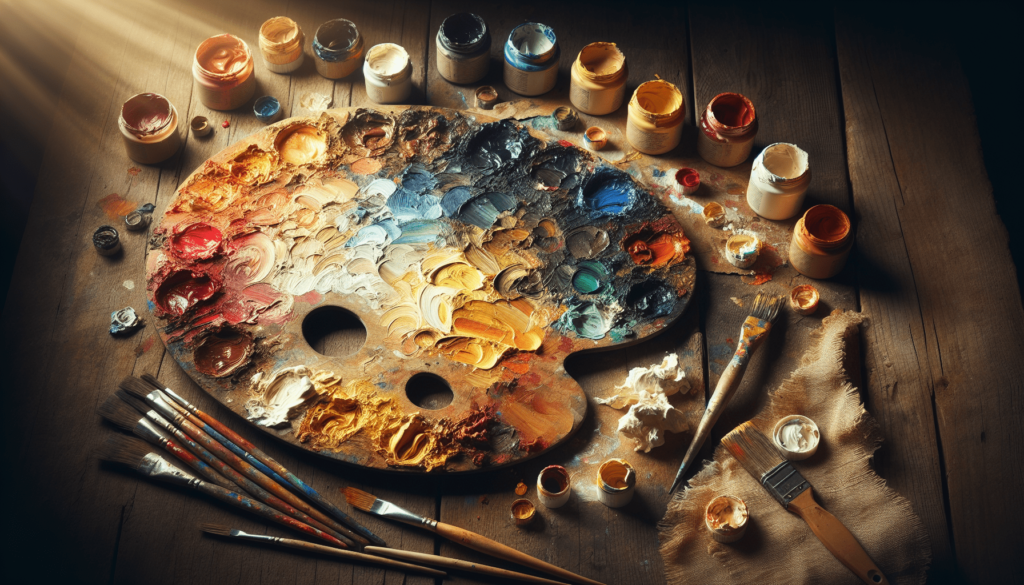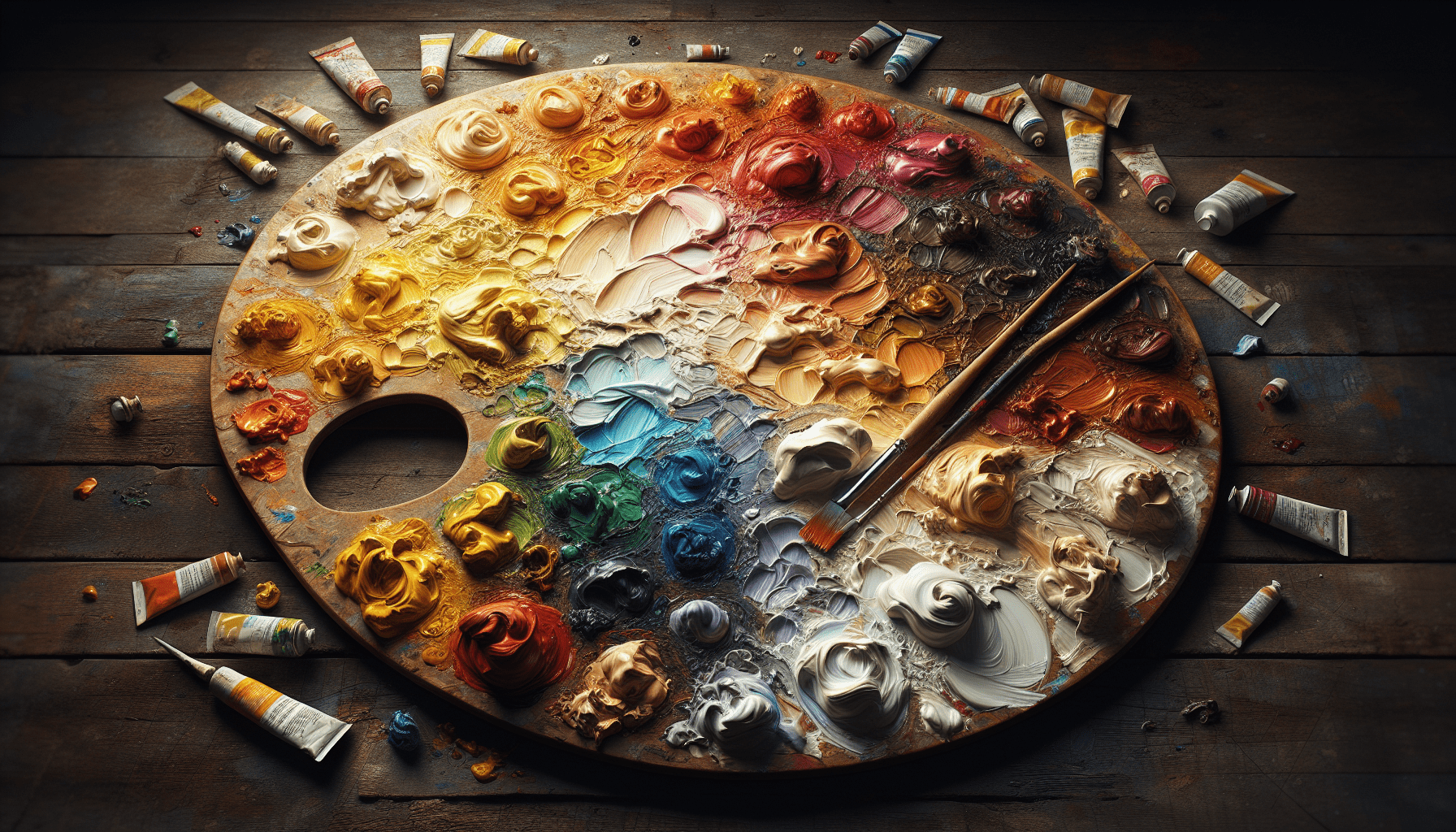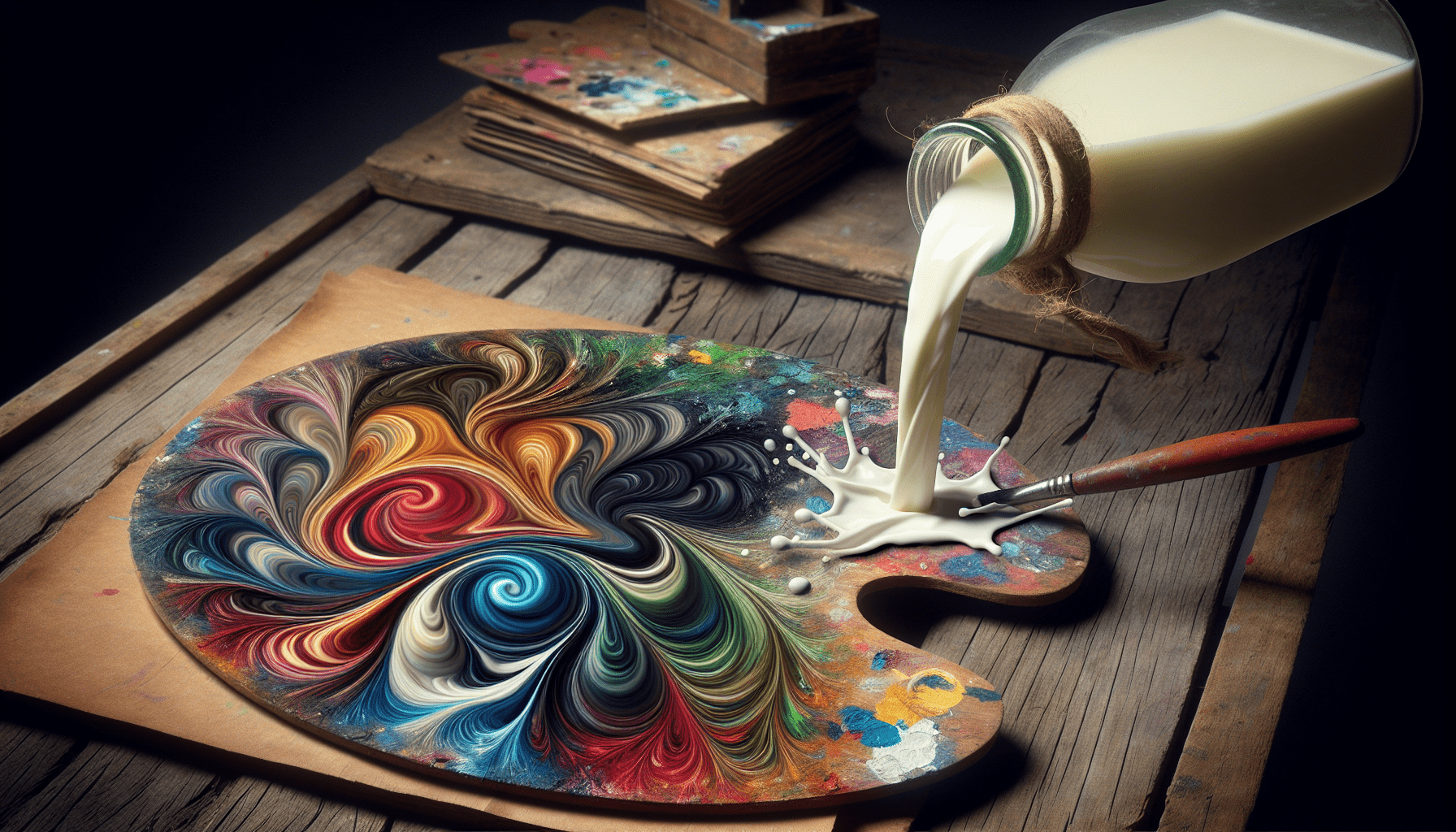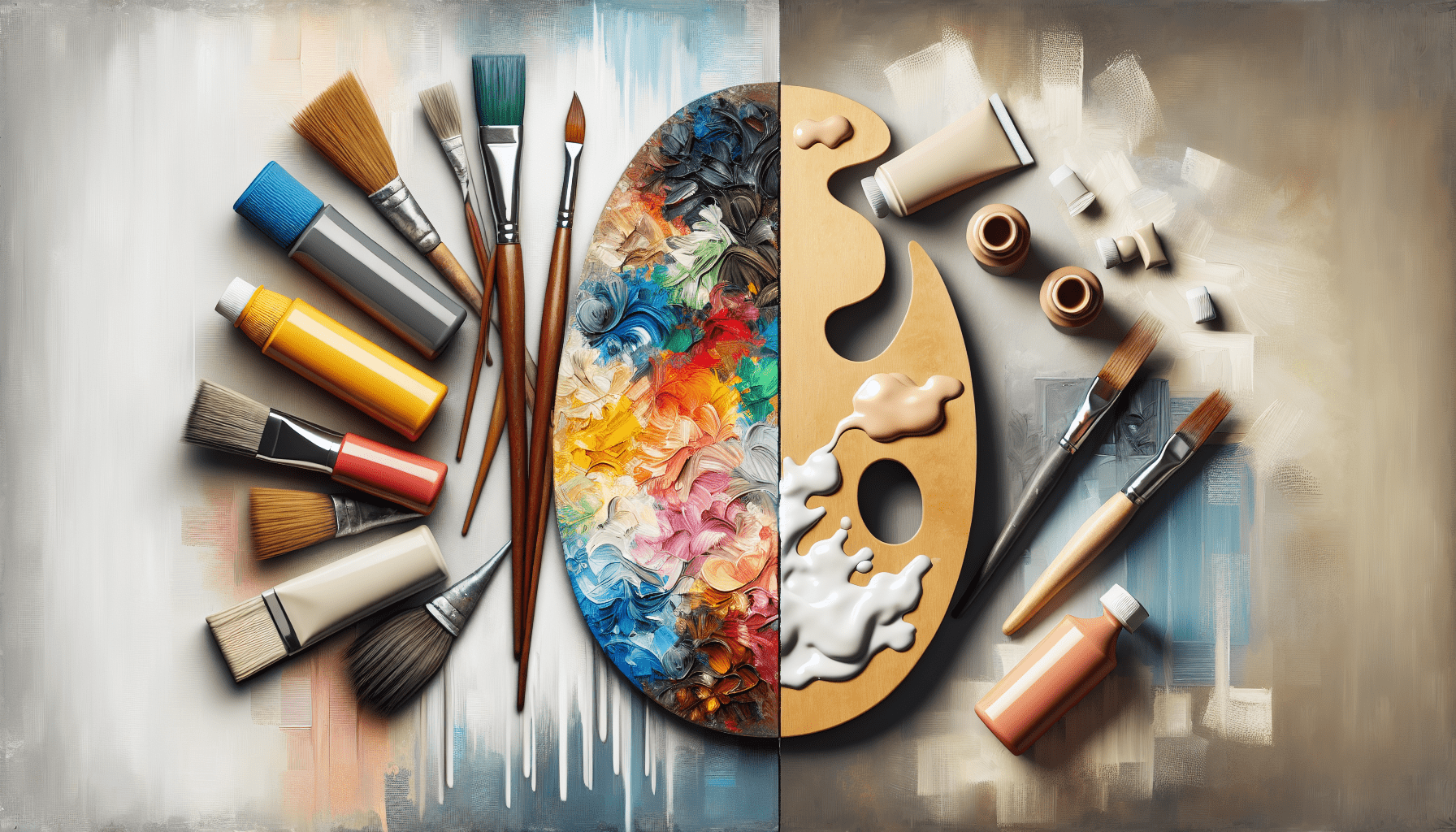Have you ever wondered how to add a unique touch to your paintings using a medium that has been cherished for centuries? Casein painting, a technique often overshadowed by more popular mediums like oil and watercolor, offers a distinct approach to artistry with its vibrant colors and versatility. In today’s professional guide, you’ll learn everything you need to know about painting with casein, from its history and unique properties to the techniques and tools required to master this rewarding art form.

Understanding Casein Paint
Casein paint is a milk-based medium known for its rich color and smooth finish. It is created by mixing dry pigments with a casein binder, derived from the protein found in milk. This type of paint has been used since ancient times and was notably popular during the Middle Ages and Renaissance. Today, it serves as a bridge between watercolor and oil painting, providing the benefits of both without some of their limitations.
The Composition of Casein Paint
The primary components of casein paint are pigments and a binder made from casein, a protein found in milk. This binder gives casein its characteristic smooth texture and allows it to adhere to various surfaces. To activate casein paint, you mix it with water, which creates a durable and matte finish once dried.
Advantages of Using Casein
Casein paint is valued for its versatility and unique texture. Unlike oil paint, it dries rapidly, allowing you to work swiftly and add layers without long waiting times. It also handles like watercolor to some extent but offers more opacity and permanence. Its quick drying time and water solubility make casein an excellent choice for underpainting or quick sketches.
Preparing Your Workspace and Materials
Before you begin painting with casein, it’s essential to prepare your workspace and gather the necessary materials. A well-organized area can improve your efficiency and creativity.
Essential Tools and Materials
To get started with casein painting, you will need the following tools and materials:
- Casein Paints: Available in tubes or as a powder that needs to be mixed with water.
- Brushes: Synthetic brushes or high-quality bristle brushes work best for casein.
- Palette: A glass or plastic palette will suffice for mixing your colors.
- Water Container: For cleaning brushes and diluting paints.
- Canvas or Paper: Casein adheres well to masonite, canvas, or watercolor paper.
- Palette Knives: Useful for mixing and applying paint in thick layers if desired.
- Spray Bottle: Optional, but helps keep the paint moist while working.
Preparing Your Surface
The surface you choose can greatly impact the final appearance of your casein painting. Casein can be applied to a variety of surfaces, however, it works particularly well on rigid supports such as canvas panels or heavy watercolor paper. Make sure the surface is dust-free, and consider applying a light primer if needed to enhance adherence.
Techniques for Painting with Casein
Casein painting techniques can vary from delicate washes to thick, textured applications. Its flexibility allows you to experiment with both transparency and opacity, making it suitable for a range of artistic styles.
Layering and Blending
One of the notable features of casein paint is its ability to be layered. Once dry, it forms a waterproof layer that allows you to add subsequent layers without disrupting the underlying paint. This property encourages experimentation with blending and gradients, which can add depth and richness to your artwork.
Incorporating Textures
With its versatile consistency, casein allows the creation of various textures. You can dilute it with water for smooth, transparent washes or apply it undiluted for a more impasto effect. Using a palette knife or adding sand or pumice can introduce interesting textures to your work, enabling you to explore different dimensions and surfaces.
Using Glazes
Casein’s fast-drying property permits the application of multiple glazes, enabling you to achieve luminosity and dimensionality in your artwork. By layering thin washes of color over a dried layer, you can build complex colors and subtle transitions with each pass, resulting in a vibrant and visually appealing final image.
Correcting Mistakes
One of the advantages of working with casein is the ease of correcting mistakes. While the paint is still wet, you can remove it with a damp cloth. Due to its rewettable nature, even dried casein can be altered slightly, though this should be done with care to avoid damaging the underlying layers.
Preserving and Displaying Casein Artwork
Once your casein painting is complete, proper preservation and display techniques are crucial to maintaining its beauty and longevity.
Protecting Your Artwork
Casein paintings are relatively durable once dry, thanks to their strong binding properties. However, for added protection, especially if your artwork will be shipped or stored, applying a casein-friendly fixative can help safeguard the surface from environmental factors. A light coat of varnish can also enhance the vibrancy of colors and provide an additional layer of protection.
Display Considerations
When displaying casein artwork, choose a location away from direct sunlight to prevent fading. While casein paint is quite durable, excessive exposure to UV light can alter pigments over time. Proper framing with UV-protective glass can help mitigate this risk. Additionally, ensure the artwork is kept in a stable climate to avoid issues like warping or mold growth.

Exploring the Rich History and Contemporary Use
Understanding the history and evolution of casein paint can inspire your creative process and connect you to a rich artistic tradition.
Historical Significance
Casein paint has been used for centuries, dating back to ancient Egypt, where it was employed in murals and decoration. Its use continued through various time periods, peaking during the Renaissance when artists utilized it for its vibrant hues and fast drying time. Casein fell out of favor with the advent of more modern synthetic paints but remains a cherished medium for those who appreciate its unique qualities.
Modern Applications
Today, casein paint is experiencing a resurgence among contemporary artists and illustrators who value its ecological benefits and classic aesthetic. Its quick drying time and versatility make it appealing for uses ranging from fine art to illustration and advertising. Some artists also appreciate its low toxicity levels compared to other paint types.
Troubleshooting Common Challenges
Like any art form, painting with casein comes with its challenges. Understanding possible pitfalls and how to overcome them can enhance your experience and outcomes.
Dealing with Drying Edge Issues
One common issue with casein paint is the formation of hard edges when the paint dries quickly. To combat this, work swiftly and consider using a spray bottle to lightly mist your workspace and maintain a longer working time for smoother transitions.
Managing Cracking
If applied too thickly or in unfavorable conditions, casein paint may crack as it dries. To prevent this, apply the paint in thin layers and ensure your painting environment is stable in temperature and humidity. If you notice cracking, adding a medium designed for casein can increase flexibility.
Achieving Consistent Color
Variations in color when casein dries can pose a challenge. Since the paint tends to lighten slightly upon drying, it is crucial to mix colors with this in mind. Some artists find creating a swatch chart with their casein paints provides a helpful reference during the painting process.
Embracing the Versatility of Casein
Casein painting can act as a bridge between different painting techniques, offering a unique creative outlet that blends the fluidity of watercolors with the richness of oils. Experimentation with this medium can lead to unexpected and exciting artistic results.
Combining with Other Mediums
For even greater versatility, you might combine casein with other mediums. It pairs well with colored pencil, charcoal, or pastel, allowing you to highlight details or incorporate mixed media elements into your work. Since casein is rewettable, exercising caution with other water-based mediums is important to preserve integrity.
Pioneering Your Style
With its broad application range and distinctive qualities, casein provides an avenue for developing a unique artistic style. Whether you aim for realistic representations or abstract expressions, the adaptability of this medium permits a wide exploration of techniques and visions.
Conclusion
Painting with casein opens up a world of possibilities for artists at any level. Its historical significance, ecological benefits, and artistic flexibility make it a valuable addition to your repertoire. Familiarize yourself with its properties, techniques, and the potential for mixing with other media to fully harness the potential of casein paint. With practice, you’ll find this ancient medium offers an intriguing balance of tradition and innovation, all while producing stunning results.



